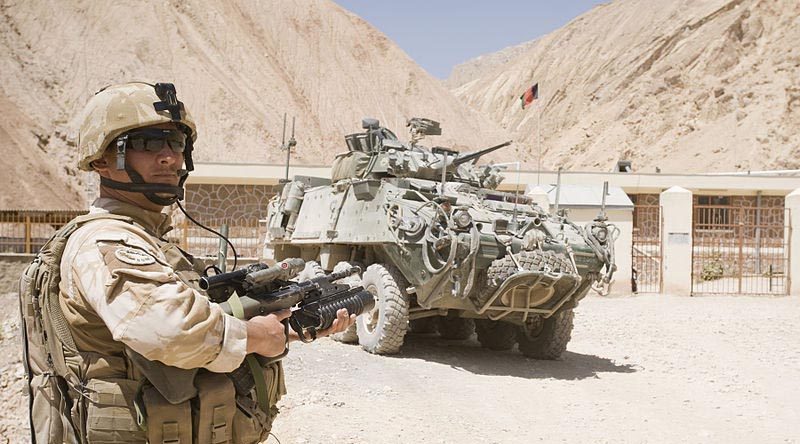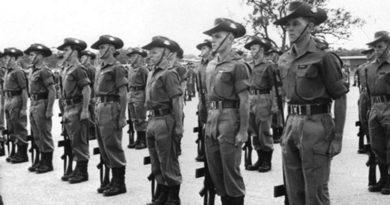First phase of NZDF extras on Bamyan ranges complete
Share the post "First phase of NZDF extras on Bamyan ranges complete"

The contractor carrying out the additional clearance of five firing ranges used by the New Zealand Defence Force in Bamyan province, Afghanistan, is ahead of schedule after the first stage.
FILE PHOTO: A New Zealand soldier and NZLAV on patrol in north-east Bamyian province, Afghanistan. NZDF photo.
New Zealand Defence Force said today that the contractor – Organisation for Mine Clearance and Afghan Rehabilitation (OMAR), an Afghanistan-based organisation that has been operating for 27 years – began the additional clearance work in June.
“By the end of the first stage of clearance at the end of October it had cleared 22 square kilometres, or 39 per cent of the total designated area. This is 7 per cent ahead of schedule,” and NZDF spokesperson said.
“The Afghan Directorate of Mine Action Coordination (DMAC), which is overseeing the clearance work, has estimated that it will take up to 52 weeks to complete.
“However, the work will be spread over two calendar years, because much of Bamyan province is covered by snow for five to six months each year.
“By the end of October, OMAR had found and destroyed 684 items of unexploded ordnance/explosive remnants of war, 75 per cent of which were identified as being of non-International Security Assistance Force origin.
“The remaining 25 per cent was identified as ammunition types used by ISAF countries, with 11 per cent of the total being ammunition types that were also used by the NZDF.
“The New Zealand Provincial Reconstruction Team (NZPRT) operated the ranges to fire non-explosive small-arms rounds, as well as some high-explosive ammunition types.
“OMAR’s findings so far reflect the long history of conflict in Afghanistan and are consistent with the remnants found by the NZPRT during its deployment in Bamyan from 2003-13.
“During the decade the NZPRT was deployed a considerable amount of foreign military unexploded ordnance/explosive remnants of war was discovered and disposed of by the team.
“When the NZPRT team withdrew from Afghanistan it cleared the firing ranges in accordance with the standards of the time.
“However, after the NZDF deployments finished ISAF introduced a new standard for range clearance, which was then adopted by DMAC.
“To meet that new standard the NZDF signed a contract with OMAR to undertake additional clearance of the range areas.”
DMAC Firing Range Project Manager Hassamuddin Sedeqi said great progress had been made, with the operator surpassing the planned target.
“In addition, DMAC has been consistently monitoring the project to ensure that the activities conducted in the field have adhered to the Standard Operating Procedures and the national standards,” he said.
.
.
.
.
.
.

.
.
Share the post "First phase of NZDF extras on Bamyan ranges complete"





